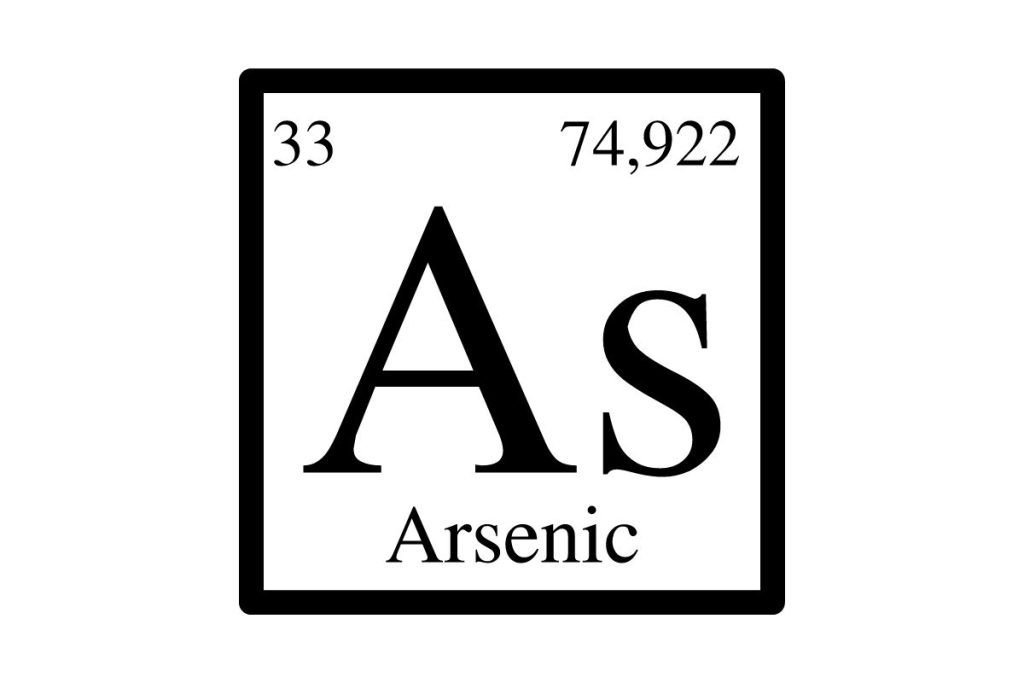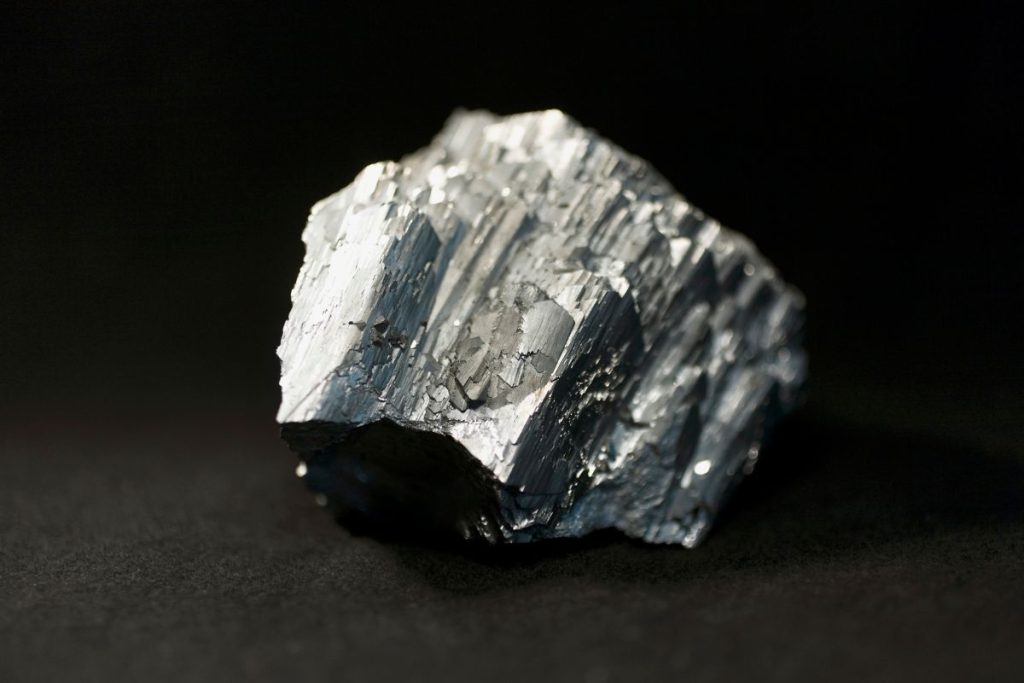The arsenic symbol is the chemical symbol for the element arsenic. It is represented by the atomic weight 74.9216 u and the symbol As. Arsenic is a naturally occurring chemical element found in small amounts in the earth's crust. Insecticides, pesticides, herbicides, and various other applications use this toxic metalloid.
What Is the Symbol for Arsenic?
The symbol for arsenic is derived from the Latin word for the element, “Arsenicum,” which in turn is derived from the Greek word “arsenikon,” meaning “yellow orpiment.” Orpiment is a yellow mineral that was historically used as a pigment and was known to contain arsenic.

What Is Arsenic’s Atomic Number?
Arsenic is a chemical element with the symbol As and atomic number 33. Germanium proceeds arsenic at 32.
What Does the Arsenic Symbol Mean?
The arsenic symbol is a pair of overlapping triangles in alchemy. It is frequently represented in alchemy by a swan or swans. This is because, as a metalloid, arsenic can change its physical appearance (from a metallic-gray solid to a yellow crystalline solid or yellow arsenic), like a cygnet can change into a swan.

What Does Arsenic Represent in Alchemy?
In alchemy, arsenic was considered a metal related to the planet Saturn and associated with the element earth. It was believed to have purifying and transformative properties. It was often used to produce various elixirs and other alchemical preparations.
As with many other substances in alchemy, arsenic was also seen as having symbolic and metaphorical meanings. For example, it was sometimes associated with death and decay, as it was believed to have the ability to poison and kill.
However, alchemists also saw it as a substance that had the power to bring about renewal and rebirth. They thought it could purify and transform other substances.
How Was Arsenic Used in Alchemy?
Arsenic was not a commonly used substance in alchemy. But it did play a role in some alchemical processes. One of the most famous examples of arsenic in alchemy is the discovery by Albertus Magnus.
Albertus Magnus was a 13th-century German philosopher and theologian. He was in the process of producing a substance known as “arsenic sulfide.” This substance, also known as “realgar,” was believed to have medicinal properties and was used as a pigment for paints and inks.
According to some accounts, Magnus discovered the process for making realgar by accident while trying to create a substance called “philosopher’s wool.” Alchemists believed that philosopher’s wool could transmute base metals into gold. According to the stories, Magnus accidentally mixed arsenic and sulfur, resulting in the production of realgar.
It is important to note that the alchemists based their practice on superstition and pseudoscience. Many of the claims made by alchemists, including the supposed ability to transmute base metals into gold, were later proven false.
Arsenic Poisoning
Arsenic is a highly toxic chemical element well-known for its poisonous properties. It has been referred to as the “king of poisons” as a small amount of arsenic can cause high toxicity. It is found in groundwater, causing slow poisoning.
Arsenic exists in various forms, including inorganic arsenic compounds, which are generally more toxic and less harmful than organic arsenic compounds.
It’s believed that one of the most famous examples of arsenic poisoning is the case of Cesare Borgia, a Renaissance-era Italian nobleman, and politician who may have used arsenic to poison his enemies. Borgia is said to have used a substance known as “aqua tofana,” which contained arsenic, to poison his enemies and eliminate rivals.
Another famous case of arsenic poisoning is the death of Napolean Bonaparte, the French Emperor who ruled from 1804 to 1814. Bonaparte’s death has long been shrouded in mystery. Still, many historians believe he was slowly poisoned with arsenic over several years.

Is Arsenic a Metal?
Arsenic is not a metal. It is a chemical element with the atomic number 33 and the As symbol on the periodic table. Arsenic is a metalloid, or semimetal, which means that it has properties of both metals and nonmetals.
It is a brittle, crystalline solid that is silvery in appearance and highly toxic. Arsenic is found in several minerals and is often used in pesticides, herbicides, and insecticides. It is also used in producing some alloys, such as lead-based alloys, and as a dopant in the semiconductor industry.
However, due to its toxicity, arsenic is not widely used in industry, and its use is highly regulated.
If you found this article intersting, you may also enjoy this article on death alchemy symbols.

